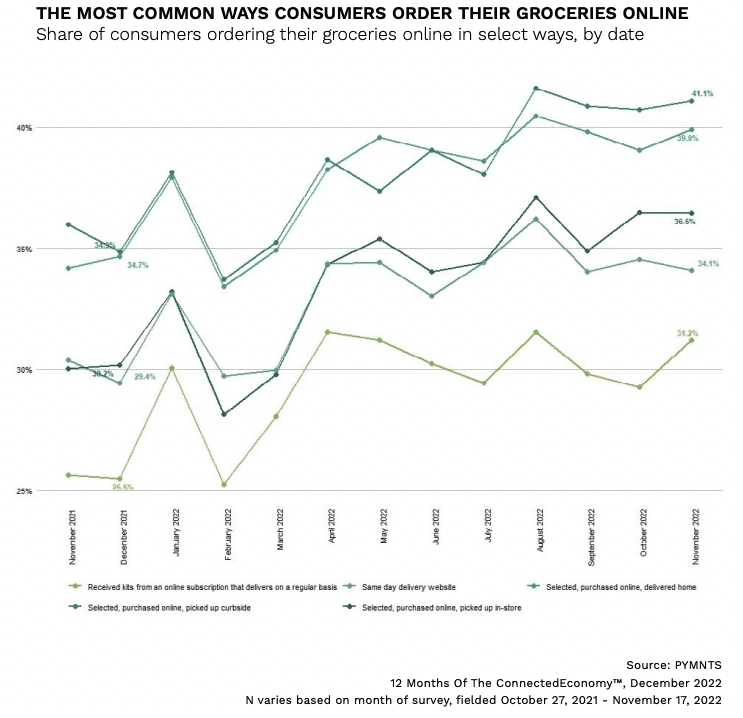
New data shows that 51% of U.S. adults are now ordering groceries online each month for delivery or pickup.
Let that sink in as we consider how remote work and convenience-seeking are driving a digital transformation in how we buy groceries, even though many of the same consumers still like going to the grocery store themselves.
It’s a key finding from PYMNTS’ “12 Months of the ConnectedEconomy™” report, derived from a survey of over 33,000 consumers. Interpreted another way, 51% of U.S. adults doing their grocery shopping online equates to 131 million eShoppers, many of whom are developing new patterns.
PYMNTS tracked five different ways consumers ordered groceries online in the 12 months between November 2021 and November 2022, and consumers used each of these methods far more in 2022 than in 2021.

Of the methods being adopted, curbside pickup is the most common way consumers order their groceries online. However, we found that 34% of consumers ordered groceries for at-home delivery in November 2021, and in the ensuing year that figure spiked to 40%, signaling a sea change in grocery habits that appears to be sticking.
Both home delivery and in-store pickups grew more popular between November 2021 and November 2022. The data shows that 30% of consumers ordered groceries to pick up in-store in November 2021, and that figure grew to 37% by November 2022.
Additionally, we clocked a 13% increase in the share of consumers ordering groceries through same-day delivery platforms and a 22% rise in the share using grocery subscriptions.
Interestingly, the study stated that “consumers’ use of digital channels to place restaurant orders did not grow as much as their use of digital channels to place grocery orders.”
That portends broader changes in consumer behavior as online ordering from restaurants — the hot ticket for two solid years starting in early 2020 with COVID lockdowns — held steady during the survey period, which is a clear indication that more people are back to preparing meals rather than ordering from restaurants in an inflationary economy.